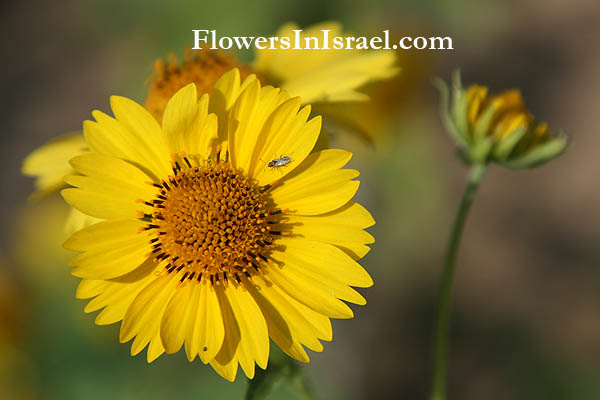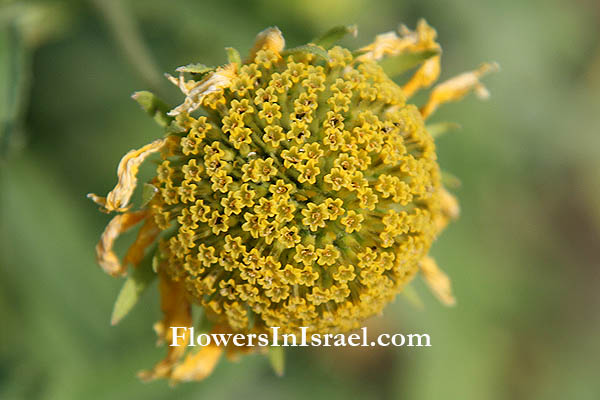Golden Crownbeard, Butter Daisy,
Hebrew: כנפון זהוב, Arabic: زهرة الشمس
| Scientific name: | Verbesina encelioides (Cav.) A.Gray | |
| Synonym name: | Ximenesia encelioides Cav. | |
| Common name: | Golden Crownbeard, Butter Daisy | |
| Hebrew name: | כנפון זהוב | |
| Arabic name: | زهرة الشمس | |
| Family: | Compositae / Asteraceae, מורכבים |

|
| Life form: | Therophyte, annual | |
| Stems: | 30-150 cm tall, dull green, branching almost from the base; hairy with dense, short, white hairs; flower stem (peduncle) 25 cm long, leafless, erect | |
| Leaves: | Opposite on lower stems and alternate towards the top; long-triangular, irregular teeth; dull green on top, whitish due to dense hairs on underside | |
| Flowers: | Ray flower: ray orange-yellow, generally 8–10 mm, ± 3-lobed; disk flower: corolla 5–6 mm; anthers yellow to light brown | |
| Fruits / pods: | Achene, inner achenes winged with a pappus of 2 bristles; seeds, dark brown becoming olive white | |
| Flowering Period: | Summer | |
| Habitat: | Disturbed habitats | |
| Distribution: | Mediterranean Woodlands and Shrublands, Semi-steppe shrublands, Shrub-steppes | |
| Chorotype: | American | |
| Summer shedding: | ephemeral |

Derivation of the botanical name: Verbesina from the resemblance of the leaves to those of Verbena. encelioides, like Encelia; Encelia is named for Christoph Entzelt (1517 - 1583), a German naturalist, an early Lutheran clergyman who Latinized his name to Encelius and published a book called De Re Metallica in 1551 about mineralogy and metallurgy, and also wrote about the medicinal uses of animal parts and plants. Ximenesia, in honor of Joseph Ximenes, a Spanish apothecary and botanist. Crownbeard refers to the hairy inner seeds. The hebrew name: knafon, כנפון, for the achenes are flattened and more or less winged (מכונפים).

|